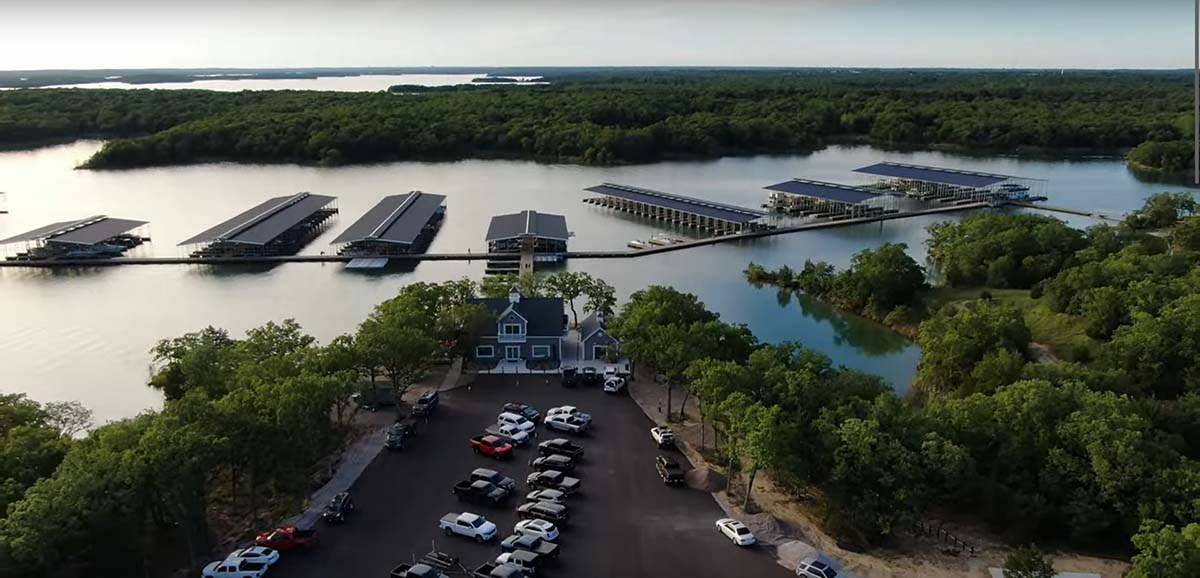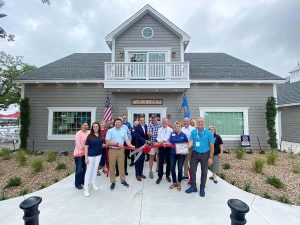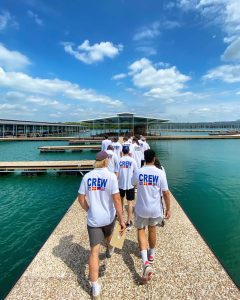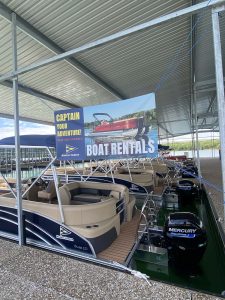
Murray Harbor Builds Success Through Public/Private Partnership
Published on March 28, 2023Many businesses that cater to tourism and recreational pursuits shuttered their doors during the pandemic. At the very least, a few considered the months and years of mandatory closures and social distancing as a time for growth. The marina industry is an exception, and within that exception lies the exceptional Murray Harbor in Ardmore, Oklahoma. This public/private recreational marina went from a site of unused land to a fully functioning marina in just 15 months and is well on its way to housing 450 wet slips and 100 dry storage racks.
The efficiency with which the team comprised of the Oklahoma Department of Tourism and Recreation and Starboard Marina Partners, brought this project to fruition was why they were awarded the 2022 Marina of the Year Building and Growing Award, presented by Marina Dock Age.
The Starboard team tapped into its 26 years of marina experience, including start-up facilities, and benefitted from an in-house design and construction team to keep work moving efficiently and on time. They relied on Meeco Sullivan as the contractor and its own staff for much of the work. Having an excellent working relationship with the state of Oklahoma, as well as the land being state-owned, also helped push the project, particularly permitting, along.
A History of P3
The public-private partnership or P3, goes back to the early 2000s when

Starboard Partners answered an RFP from the U.S. Army Corps of Engineers to develop land on the Skiatook Lake in the Tulsa district for recreational purposes. “It was a first-of-its-kind federal program to see if the Corps could partner with private enterprise to create successful development in an undeveloped and underserved area,” said Ron Howell, a partner in Starboard Partners, LLC. Starboard, which was the only applicant, put together a comprehensive plan for the 700 acres that included camping, an event center, and a marina, which eventually became Cross Timbers Marina. The marina opened in 2005 with Starboard’s Dustin Houff managing it until it was sold in 2016 to Suntex Marinas. The land went from an assessment of $16 million to well over $200 million providing a large boost to the economy in the area, as well as providing a social benefit.
With their proven success, Starboard Partners was asked to respond to this latest RFP in 2019 and they were awarded the contract in January 2020. With tourism the third largest contributor to the state, the Oklahoma Department of Tourism was heavily involved in the process and challenged the team to be up and running within 14 months. The onset of Covid-19 made this more challenging on the one hand, but it also meant local contractors, and Meeco Sullivan which was chosen to construct the docks, had a bit more time on their hands.
“It was really the dream team as far as experience and what we brought to the table. We already knew what worked and didn’t and what we wanted to do better. Murray Harbor is the result of putting all that experience into action,” Pat Cox, president of Starboard Corporation and principal of Starboard Partners LLC said.
From the Ground Up
To say the land was vacant when the project started only gives part of the picture. Vacant in this case meant there were no roads or utilities, let alone parking, buildings, or docks. The marina concept required extensive study, planning, coordination, partnering, and timely execution. They broke ground in April 2020 developing the greenfield infrastructure with water, sewer and electric lines, roads, and gates. Meeco Sullivan began work on the upland infrastructure and marina.

The marina was master planned to maintain a “Green Ring” around the shoreline with minimal disturbance. This was achieved by connecting all the docks together with a master pier system with two gangway piers at each end. Only about 100 feet of natural shoreline was disturbed. “There is no other marina in the Midwest of this scale that is designed and built, from day one, to have the most minimal impact on the natural shoreline,” Howell said. “The marina setting, and facility quality is second to none. The natural environment has been purposely and passionately maintained for its beauty and to demonstrate environmental stewardship.”
Howell and his team were no strangers to environmental stewardship. When they were building Cross Timbers, they found that there were trees on site as old as 500 years that were part of the ancient forest from the time of Washington Irving. They worked with the Corps to take core samples to estimate the age of the trees and put in signage touting the age and what was happening in the world at the time. The trees became part of a walking trail that they constructed for the public, taking advantage of the old bulldozer trails. Cox said they have discovered some of those same trees from the ancient forest on the Murray Harbor site and they intend to work with the Corps to create a similar trail.
Phase I, a fully operational marina, was completed in May 2021, phase II wrapped up in June 2022, and phase III is slated for completion in the spring of 2023. The marina is a modern, eco-friendly, full-service operation that includes a boat club, rentals, and charters, as well as fuel, upland storage, a boat ramp, and a ships’ store. It caters to customers predominantly from the Dallas and Oklahoma City areas. “The state wanted the slips done first as the most important element from a demand standpoint. As we grow and get to a critical base of customers, then we have plans for cottages both on the shoreline and floating, and we want to expand our service once the customer base is there,” said Cox.

Looking at the success of Murray Harbor, Howell and Cox both recognize how essential a P3 relationship was in creating the marina. Howell suggested that with many waterways managed by the Corps, states, or localities, private enterprise needs to be brought in to get projects like this off the ground because governments don’t have the knowledge or manpower to build and manage waterfront facilities. Cox explained that they are concessionaires to the state of Oklahoma and as such pay a percentage of gross income back to the state. “The state wants to see a good ROI so they need to give someone that opportunity to make it happen. Private operators are always motivated to earn more, where keeping properties in government hands the same might not be true,” Cox said.
Howell, Cox, and their teams seem to have figured out the winning formula for making P3 work successfully and the boaters on Lake Murray will reap the benefits for decades to come.
| Categories | |
| Tags |




